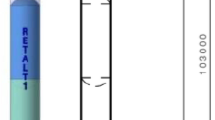Abstract
The dramatic increase in computational power since the Apollo program has enabled the development of numerical predictor-corrector (NPC) entry guidance algorithms that allow on-board accurate determination of a vehicle’s trajectory. These algorithms are sufficiently mature to be flown. They are highly adaptive, especially in the face of extreme dispersion and off-nominal situations compared with reference-trajectory following algorithms. The performance and reliability of entry guidance are critical to mission success. This paper compares the performance of a recently developed fully numerical predictor-corrector entry guidance (FNPEG) algorithm with that of the Apollo skip entry guidance. Through extensive dispersion testing, it is clearly demonstrated that the Apollo skip entry guidance algorithm would be inadequate in meeting the landing precision requirement for missions with medium (4000-7000 km) and long (>7000 km) downrange capability requirements under moderate dispersions chiefly due to poor modeling of atmospheric drag. In the presence of large dispersions, a significant number of failures occur even for short-range missions due to the deviation from planned reference trajectories. The FNPEG algorithm, on the other hand, is able to ensure high landing precision in all cases tested. All factors considered, a strong case is made for adopting fully numerical algorithms for future skip entry missions.








Similar content being viewed by others
References
US standard atmosphere. US Government Printing Office, Washington, DC (1976)
Bairstow, S.H.: Reentry guidance with extended range capability for low L/D spacecraft. S.M. thesis, MIT, Department of Aeronautics and Astronautics (2006)
Bairstow, S.H., Barton, G.H.: Orion reentry guidance with extended range capability using Predguid. AIAA, 2007–6427 (2007)
Brunner, C.W.: Skip entry trajectory planning and guidance. Ph.D dissertation, Iowa State University, United State – Iowa. (Publication No. AAT 3316167) (2008)
Brunner, C.W., Lu, P.: Skip entry trajectory planning and guidance. J. Guid. Control. Dyn. 31(5), 1210–1219 (2008)
Brunner, C.W., Lu, P.: Comparison of numerical predictor-corrector and Apollo skip entry guidance algorithms. AIAA, 2010–8307 (2010)
Justus, C.G., Johnson, J.L.: The NASA/MSFC Global Reference Atmospheric Model – 199 version (GRAM-99). NASA-TM-1999-209630 (1999)
DiCarlo, J.L.: Aerocapture guidance methods for high energy trajectories. S.M. thesis, MIT, Department of Aeronautics and Astronautics (2003)
D’Souza, C., Crain, T., Clark, F.D., Getchius, J.: Orion cislunar guidance and navigation. AIAA Paper, 2007–6681 (2007)
Gamble, J.D., Cerimele, C.J., Moore, T.E., Higgins, J.: Atmospheric guidance concepts for an aeroassisted flight experiment. J. Astronaut. Sci. 36(1), 45–71 (1988)
Garcia-Llama, E.: Analytical development of a reference trajectory for skip entry. J. Spacecr. Rocket. 34(1), 311–317 (2011)
Graves, C.A., Harpold, J.C.: Apollo experience report - mission planning for Apollo entry. NASA TN D-6725 (1972)
Hanak, C., Crain, T., Masciarelli, J.: Revised algorithm for analytic predictor - corrector aerocapture guidance: exit phase. AIAA Paper, 2003–5746 (2003)
Hillje, E.R.: Entry aerodynamics at lunar return conditions obtained from the flight of Apollo 4 (as-501). NASA-TN D-5399 (1969)
Levine, G.M.: Apollo guidance, navigation, and control. MIT-Charles Stark Draper Laboratory. R-577, Guidance System Operations Plan for Manned CM Earth Orbital and Lunar Missions using Program Colossus 3, Section 5, Guidance Equations (Rev 15) (1972)
Lu, P.: Predictor-corrector entry guidance for low lifting vehicles. J. Guid. Control. Dyn. 31(4), 1067–1075 (2008)
Miller, M.A., Barton, G.H.: Managing energy and mode transitions in Predguid entry guidance. AIAA Paper, 2008–7264 (2008)
Morth, R.: Reentry guidance for Apollo. MIT/IL R-532, 1966. Volume I
Moseley, P.E.: The Apollo entry guidance: A review of the mathematical development and its operational characteristics. TRW Note No. 69-FMT-791 (1969)
Powell, R.W., Braun, R.D.: Six-degree-of-freedom guidance and control analysis of Mars aerocapture. J. Guid. Control. Dyn. 16(6), 1038–1044 (1993)
Rea, J.R., Putnam, Z.R.: A comparison of two Orion skip entry guidance algorithms. AIAA Paper, 2007–6424 (2007)
Tigges, M.A., Crull, T., Rea, J.R.: Numerical skip-entry guidance. AAS Paper, 07–076 (2008)
Vinh, N.X.: Optimal trajectories in atmospheric flight, pp. 58–60. Elsevier Scientific Publishing Company, New York (1981)
Putnam, Z.R., Bairstow, S.H., Braun, R.D., Barton, G.H.: Improving lunar return entry range capability using enhanced skip trajectory guidance. J. Spacecr. Rocket. 45(2), 309–315 (2008)
Author information
Authors and Affiliations
Corresponding author
Rights and permissions
About this article
Cite this article
Brunner, C.W., Lu, P. Comparison of Fully Numerical Predictor-Corrector and Apollo Skip Entry Guidance Algorithms. J of Astronaut Sci 59, 517–540 (2012). https://doi.org/10.1007/s40295-014-0005-1
Published:
Issue Date:
DOI: https://doi.org/10.1007/s40295-014-0005-1




